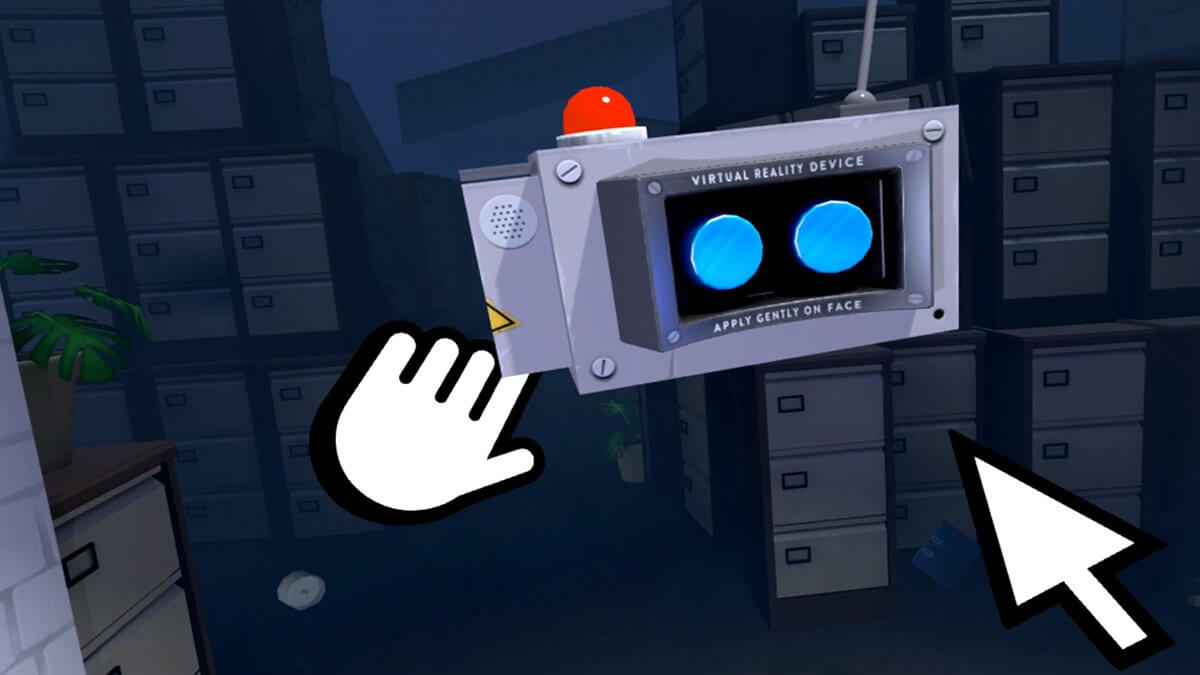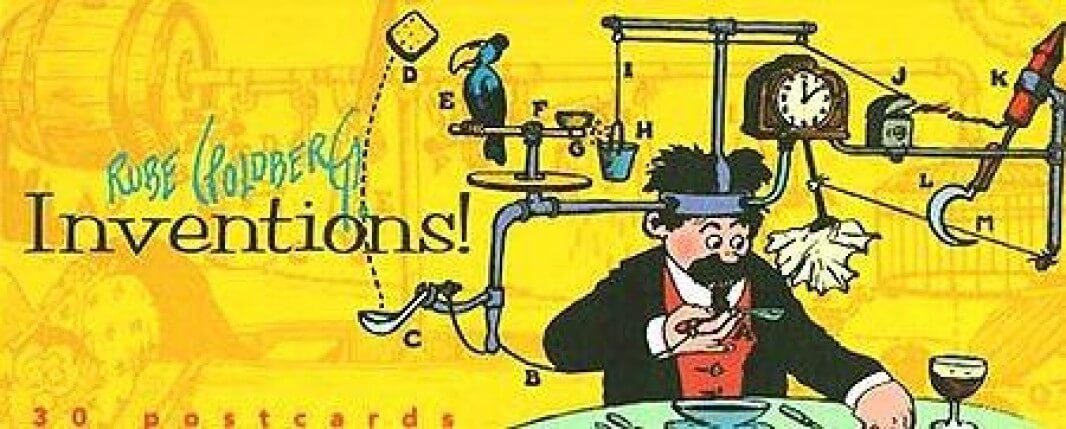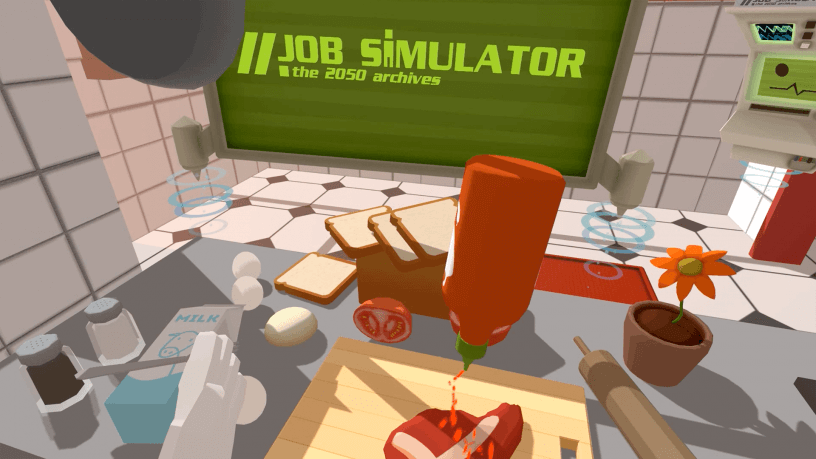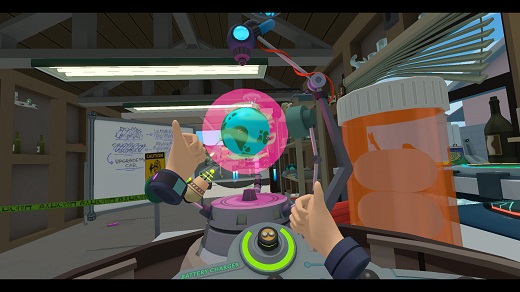- by John Luxford
By John Luxford, CTO & Co-founder - Flipside
Storytelling in virtual reality is about directing attention and engaging via interaction with the user. In film, there is the frame to direct attention, but in VR the user can look away when you didn't intend for them to and miss a key plot point or instruction.
Here, I'd like to explore how Teller's secrets that magicians use to manipulate audiences can be applied to build stronger narratives in VR.
Note: This post uses examples from common VR experiences, so it may contain spoilers if you haven't played them. I'll do my best to keep the examples simpler and relatively spoiler-free.
Repetition builds expectation, which will draw the user's attention back to the repeating action. For example in Accounting, the repeated use of putting on a virtual headset to move to the next part of the narrative, or the miniature lawyers that keep popping out of the briefcase in the courtroom scene.

If we look to create common metaphors and repetition around choices the user is given, it helps build familiarity and understanding of their surroundings so they can get lost in the details of the experience itself as they progress through it.
By making something more elaborate, we can string them along multiple steps, or wow them with the perceived complexity of the task, even if it involves just two or three elements. In the extreme example, a Rube Goldberg machine comes to mind, whose complexity can easily wow audiences both in and out of VR. Many simpler examples exist in VR due to the perceived physical nature of the medium.

In terms of immersion, this can be as simple as confirming a single interaction via multiple senses (visually via depth cues and believable movement, accurate spatialized audio, and haptic feedback to touch), which tricks the mind into believing the interaction was with a real object. This can lend believability to any interaction, from pressing a button to mimicking the feel of shooting a bow and arrow.
Probably the simplest but best example of this is a technique that originated in Job Simulator, which is that as soon as you pick up an object your virtual hand disappears and is replaced by the object itself.

Owlchemy Labs had discovered that when you're busy pouring virtual hot sauce on things and laughing at the hot sauce coming out of the virtual bottle, you don't even notice your hand isn't wrapped around the bottle anymore. This has the benefit of avoiding having to make the virtual hand look right when wrapped around a wide variety of objects with varying shapes, which when done wrong can highlight the limitations of the experience and break the sense of immersion as a result.
As an interesting aside, we opted not to use this technique in Flipside after much testing, because the perception of the viewer is more important than the perception of the actor in a show, and viewers found it odd that the actors' hands kept disappearing.
The frame in both magic on stage and story in VR is where the user's attention has been drawn. Fortunately in VR, the trickery is often in the form of making something appear or disappear, which can happen in a variety of ways.
You can make something appear right in front of the user to create an element of surprise, or worse you can make a monster appear beside them when they're not looking to create a jump scare.
To make a character disappear when they're no longer needed, they might walk out of a door or behind an obstruction and can be turned off when safely out of view. Meanwhile the user's attention is directed towards the next part of the experience.
This also relates to the example of combining multiple senses I used earlier, since much of VR's ability to immerse comes from the reinforcement of information across multiple sensory inputs. The eye can't be wrong if the ear heard it too.
But in terms of narrative and progression, combining two tasks or actions can be a great way to reinforce the direction of a user's attention, helping ensure they're seeing the key points along the way.
For example in Rick and Morty: Virtual Rick-ality, the need to use the microverse machine to complete the task of recharging the batteries adds a second layer of interaction to the original goal, which immerses the user in a deeper way.

Bringing physicality into the experience by requiring the user to carry out a task itself is a way of combining the story element with participation. When the user is busy doing, we can be busy setting up the next steps for them.
To use something from Flipside in an example, we have a VR episode of Super Secret Science Island in our not-yet-released Flipside viewer app where 2B throws a magic pencil out to the audience, breaking the fourth wall. If the viewer catches the magic pencil, the magic pencil grows to match the size of the viewer's hand. Most users we've tested don't even notice it happen, which means they've suspended their disbelief.
In fact, the magical action of throwing something out of the pre-recorded show and into your hand, akin to a character throwing something out of the television and into your living room, doesn't even seem that far fetched as it happens. The pencil appears in your hand as expected, and most users simply begin to draw with it.
Whenever the user can inspect an object for themselves, they'll believe what their senses tell them.
The simplest example here isn't exclusive to VR games, but any sandbox narrative style game offers the user a limited set of choices, and as you make these choices you begin to feel that the game's outcomes are tailored to your individual set of choices. But in reality there are only a handful of final outcomes in the game's sandboxed world.
Some VR examples include Push for Emor, the previously mentioned Rick and Morty: Virtual Rick-ality or the highly-anticipated Fallout 4 VR.
As you can see, there are many parallels between VR narratives and traditional forms of live entertainment like theatre, improv, and magic. Magicians especially have had millenia to hone the craft of manipulating perception, which makes for a rich body of work to learn from as we craft our narratives in this new medium. Once again, what is old becomes new again, which might be the oldest trick in the book.